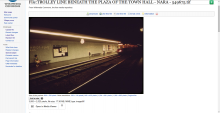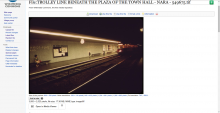Author: mcdevitd
Description:
See this mockup from Jean-Fred: https://commons.wikimedia.org/wiki/File:Mock-up_TIFF-JPEG_fullsize_-_Wikimedia_Commons.png
Where certain file formats (like TIFF, SVG, PNG, etc.) also offer full-resolution "previews" in a more user-friendly (and browser-friendly) format like JPG, we should be making this more obvious to the users who might want to download/view that instead of the original file. Right now, the prominent link is to "Original file". During a Commons Village Pump discussion Jean-Fred mocked up how we could make this option more visible to the users, with a "Full Resolution in JPEG" link of equivalent size and placement as the "Original file" link currently is.
Version: 1.23.0
Severity: enhancement
See Also:
https://bugzilla.wikimedia.org/show_bug.cgi?id=25148

